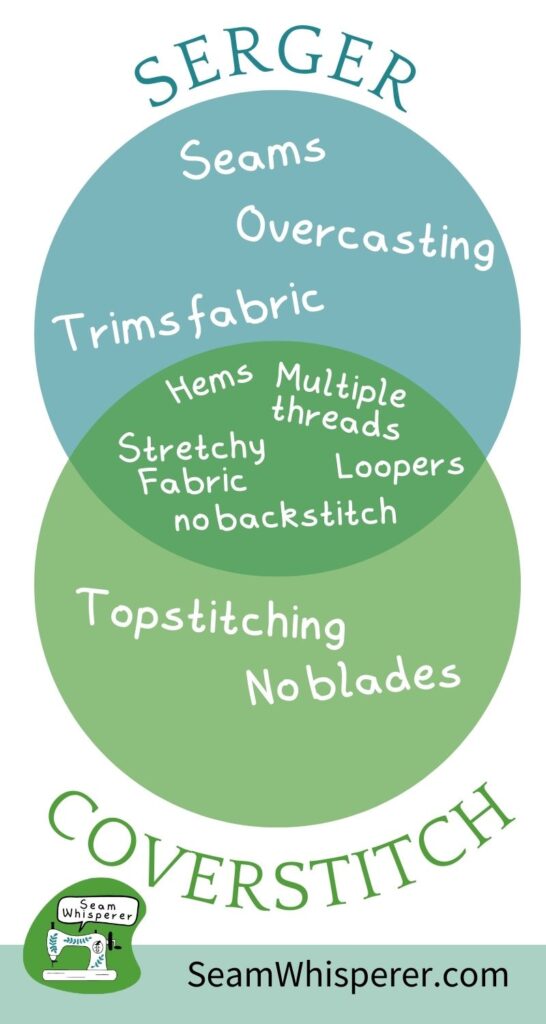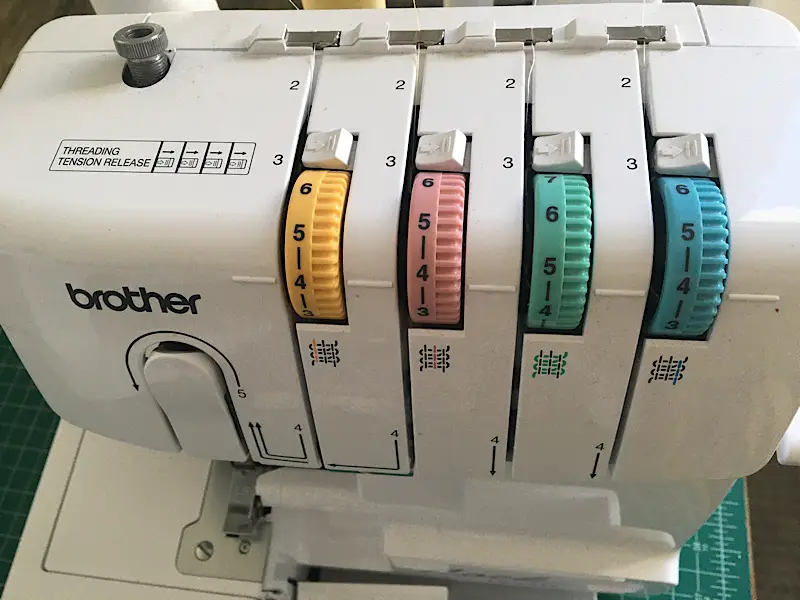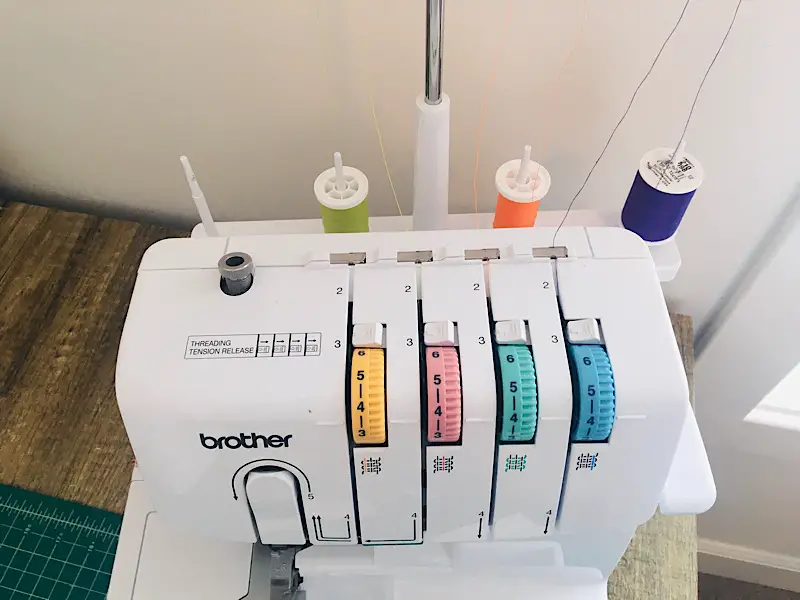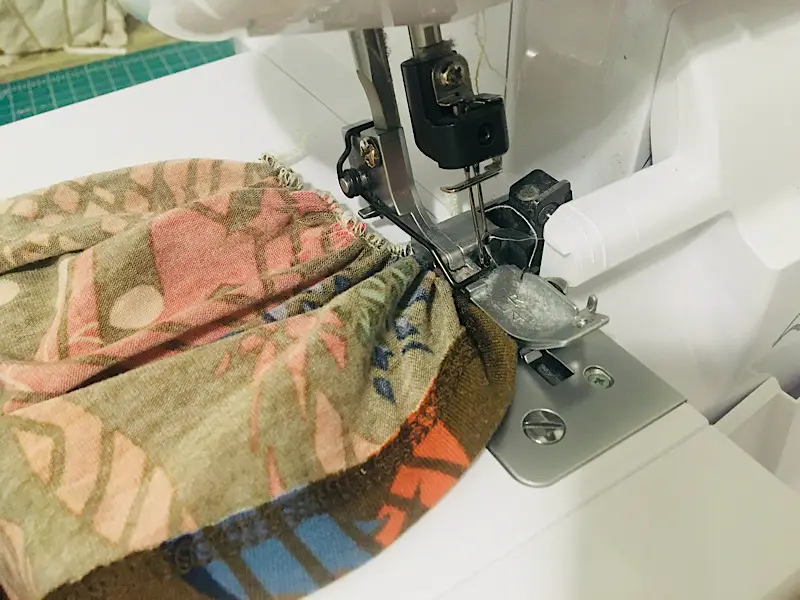One of the things I love about my Brother 1034D serger is how easy it is to make professional looking clothing with! The serged seams really make any project top notch, especially when working with knits.
There are a few common seams and hem types that appear on almost all store-bought garments. The serged seam is one of them, but to achieve the crisp and stretchy hem you require a coverstitch.
As someone who frequently hems and sews knit clothing, I had to know if this specialty stitch was possible for me on this machine.
This post may contain affiliate links. Read the full disclosure here.
Does the Brother 1034D serger do coverstitches?
As a 3/4 thread serger, the Brother 1034D is not capable of making coverstitches. The blind hem serged stitch can be a good alternative to coverstitches in a pinch. Brother also makes dedicated coverstitch machines such as the 2340CV if real coverstitches are a must for you.
Let’s break it down in a little more detail. The Brother 1034D is a 3/4 thread serger, which means it is capable of serging with 3 or 4 threads. This produces typical large and flat serged seams, as well as very narrow and rolled serged seams.
Because this machine is an overlocker, it is equipped with two blades that cut away the edge of the fabric as you sew. This allows the machine to sew OVER the edge, locking it in. (Hence the term “overlock”).
What Is the difference between a coverstitch machine and a serger?
The difference between a coverstitch machine and a serger is the type of stitch each machine makes. A serger uses blades to trim fabric while overlocking the edge to make professional seams. The coverstitch machine is used to make stretchy and flat hems, recognizable by two lines of top stitching.
Although coverstitch machines look very similar to sergers due to the thread tree that holds multiple spools of thread, coverstitch machines do not have blades, cannot trim the edge of the fabric, and do not overlock (meaning they do not loop the thread over the edge of the material.)
Some machines may be able to make both serged stitches and coverstitches, but in general these stitches are produced by two separate machines.
Here is an example photo of a serged stitch. Notice the multiple loops, and how the stitch wraps over the very edge of the material. You can find serged stitches easily on the inside side seams of a stretchy T shirt.


Here is an example of a coverstitch, notice that on one side of the hem there are two straight stitches, and on the back there are loops. You can easily locate your own coverstitches on the bottom of t shirts or leggings or other stretchy pieces of clothing.
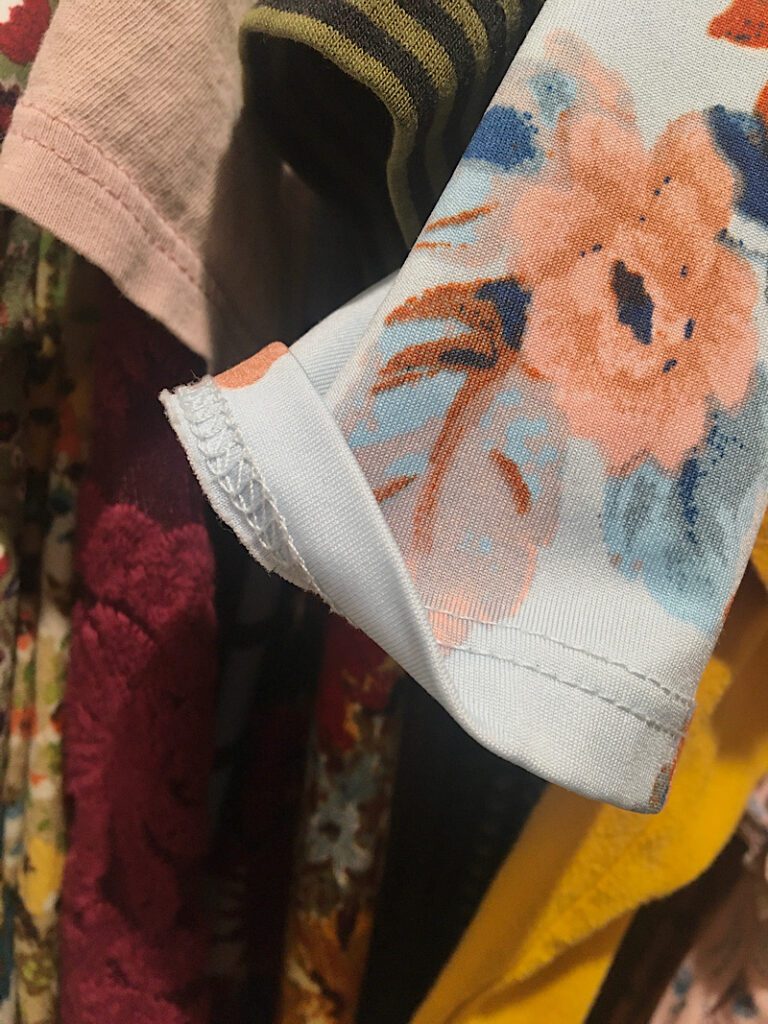

Coverstitches can also be made with only one top stich line, instead of two.
What Stitches Can the Brother 1034D Serger Do?
The Brother 1034d Serger can perform 5 different stitch types: 4 thread overlock, 3 thread overlock, narrow hem, rolled hem, and ribbon lock. Utilizing the accessory presser feet, you can also use the Brother 1034D to sew blind hem serged stitches, pin tuck stitches, flat lock stitches, and more.
In addition, there are a number of decorative stitch options such as soft gathers or heirloom stitches.
Many of the decorative stitches use one of the same 5 basic stitch types, simply adjusting the tension or application to produce a different look.
Alternatives to Coverstitches
If you are sewing stretchy clothing and need some alternatives to a coverstitch that the Brother 1034d CAN do, here are a couple of ideas.
Blind Hem Serged Stitch
This stitch is similar to a blind hem on a regular sewing machine, however you are serging the folded hem instead of using a blind hem stitch. To complete this hem on the Brother 1034D, you will need the specialty blind hem foot (it may have come with your machine when you bought it.)
Serge and Fold
Another simple alternative hem that works well for sleeve and bottom hems is to serge the edge, fold it over ab
out 3/4 of an inch, then bring it over to your sewing machine and top stitch it down with a stretch stitch.
This method is simple, doesn’t require a special presser foot, and somewhat resembles a coverstitch (especially if you sew two lines on the front.)
Conclusion
Although a 1034D serger can be used for many applications, a separate machine is needed to make coverstitches. Luckily, there are a few alternative ways to hem with a serger, such as a blind hem!
Coverstich machines and sergers are both great machines to have in your craft room, especially if you make or tailor clothing regularly. (Clothing alterations are my passion, I am due for a coverstitch machine soon!)
Make sure to read my other guides on sergers, PIN this helpful infographic on serging VS coverstitching, as well as sign up for my email list for more helpful content.
